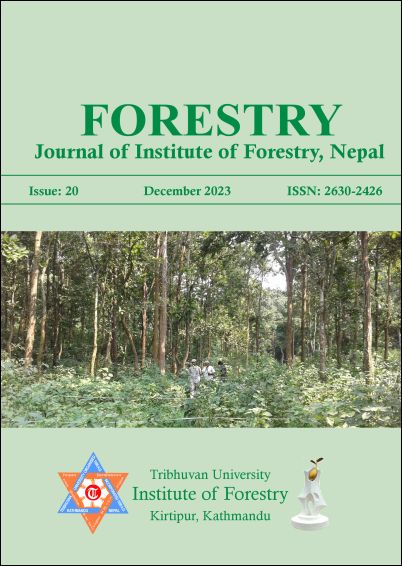Forest Fire Dynamics in Nepal’s Mid-hills: Insights from Spatial Analysis and Risk Mapping of Doti District
DOI:
https://doi.org/10.3126/forestry.v20i1.64283Keywords:
Fire risk mapping, Forest fire, Mid-hills, Spatial analysis, VIIRSAbstract
Forest fires have significantly contributed to forest degradation and pollution all over Nepal. Despite their high severity, limited studies have been conducted on the spatial-temporal analysis and risk mapping of these fires especially in the Mid-hill region. This study aims to fill this gap by analyzing Visible Infrared Imaging Radiometer Suite (VIIRS) data from 2012 to 2022, along with satellite imagery, using remote sensing and geographic information systems (GIS) technology. Nine variables, including land class, distance to roads, proximity to settlements, temperature, wind speed, precipitation, slope, aspect, and elevation, were utilized to identify forest fire patterns and create a fire risk map. A multi-parametric hierarchical weighted index model was employed, with multicollinearity checked (VIF<2) to ensure model accuracy and validated by Area Under Curve (AUC=0.787). The study revealed an increasing trend of forest fires, particularly during March to May, in broad-leaved forests near human interference. Out of the total forested area of 1447.58 km2, 42.9%, 46.03%, and 11.07% were classified under high, moderate, and low-risk zones, respectively. The study emphasizes the recurring forest fire problem in often-neglected Mid-hill districts and underscores the need to prioritize them in future strategies.
Downloads
Downloads
Published
How to Cite
Issue
Section
License
© Tribhuvan University, Institute of Forestry




